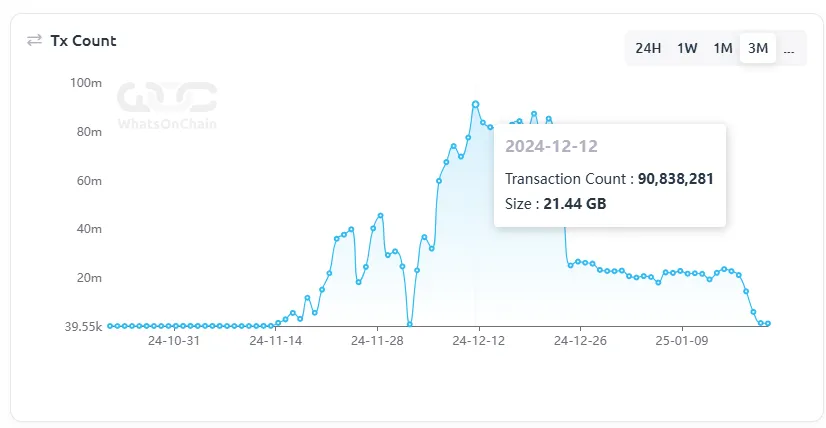Days before Donald Trump was inaugurated as the 47th President of the United States, digital currency traders learned via an X post that the President-elect had launched an official $TRUMP memecoin on Solana.
At first wondering if the Trump account had been hacked, traders soon realized it was real, causing a rush to “decentralized” exchanges like Raydium while centralized exchanges like Coinbase (NASDAQ: COIN) attempted to list the Trump token.
What followed was nothing short of a debacle. Aside from questions of ethics and securities regulations, the race to mint the president’s official coin drove prices sky high and brought the Solana network to a halt. It’s not the first time it’s happened.
While Solana blockchain officially “stayed up” and didn’t go offline for a hard reset like it has in the past, buying and trading $TRUMP was a less impressive user experience. Yet the craze was just beginning as the very next day the first lady launched her own token, $MELANIA, causing another pile-up as traders tried to buy it before the pump started.
The industry still hasn’t accepted that it’s all about the original Bitcoin protocol
If you look at the “Top 20” tokens on some site like CoinMarketCap.com, you’ll find tokens with market capitalizations worth tens of billions, but none of the blockchains can handle an influx of millions of users, let alone billions. Imagine how they would do if one popular game or app went viral globally.
But outside of the spotlight, some blockchains are scaling. The BSV blockchain has successfully scaled to one million transactions per second thanks to its Teranode update. Blockchains like this crack down on supposed “spam” transactions, with critics claiming they’re not genuine and controlled by bots, but moments like this show it doesn’t matter, even if it were true (it’s not ).
A transaction is a transaction, whether sent by a human or a bot. The important thing is that the blockchains in question can reliably handle demand without a dramatic fee spike. In BSV’s case, it has proven that it can handle 90 million daily transactions without any problems. Still after Theranode goes live it can handle that volume in 90 seconds. Stress testing is important and BSV has passed with flying colours.

Critics can point to some of the drama surrounding BSV and the characters involved in it over the years, but they can’t lay a glove on it when it comes to technical prowess. When push comes to shove, BSV delivers, and the more popular blockchains buckle under pressure repeatedly.
Interesting insight: View (NASDAQ: V) network processed 192.5 billion transactions in 2022. With the Teranode upgrade enabling one million transactions per second, the BSV blockchain was able to process the entire Visa network volume for that year in just over 53 hours.
It is time to embrace solutions that work
At some point, blockchain entrepreneurs and developers must put tribalism aside and embrace technology that works. Users do not tolerate accounting that folds or fees that increase during an influx of users for a long time. Should something go viral that appeals to regular people who don’t use blockchain regularly, the technology should be ready.
With the increased attention from institutions, governments and financial giants embracing tokenizationcentral bank digital currencies (CBDC) and other blockchain solutions, performance matters. While memecoins may steal the limelight in the short term, technology that works will win the long game.
Watch: The History of Bitcoin with Kurt Wuckert Jr.
title=”YouTube video player” frameborder=”0″ allow=”accelerometer; autoplay; clipboard-write; encrypted-media; gyroscope; picture-in-picture; web-share” referrerpolicy=”strict-origin-when-cross- origin” allowfullscreen=””>





